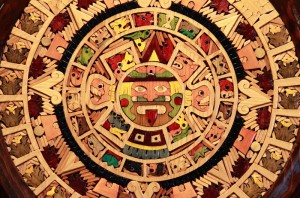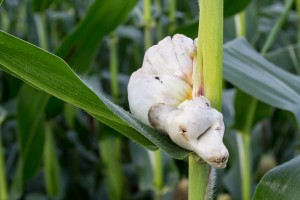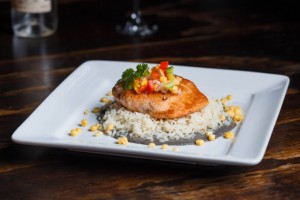Foods of the Aztec
Written for Señor Ernesto Delgado
What did the Aztecs eat?
We’d all like to think our 21st century diet is superior to anything ancient cultures may have consumed, but, at least in the case of the Aztecs this is likely not true.
According to historians, migrating tribes began to settle in Mexico prior to 1100 CE. Small, ‘city-states’ were formed, each a separate entity ruled by a Tlatoani, who led a council of nobles. As these city-states grew and prospered, those with more power began to dominate. By the late 1200’s, several separate empires had formed in Mexico.
Of those empires, the one which existed in the city of Tenochtitlan was the most powerful. Warriors from this area dominated neighboring city-states and enabled the ruler, Motechuhzoma II, to impose Aztec ideals and religion across a huge geographical area of Mexico.
The Aztec people were highly accomplished in agriculture as well as trade. This civilization, which flourished from around 1345, was also noted for its great architecture and art.

It’s surprising to history scholars that the Aztec capital fell to the Spaniards, led by Cortes, in August of 1521. One theory is that Smallpox, brought to Tenochtitlan by one of Cortes’ solidiers, played a huge role in the eventual fall of the Aztec empire. So many warriors succumbed to the disease, they were unable to stop the onslaught of the Spaniards, who may have won simply because their immune systems were a bit more impervious to Smallpox.
While the Aztecs ruled, they farmed large areas of land. Staples of their diet were maize, beans and squash. To these, they added chilies and tomatoes.
They also harvested Acocils, an abundant crayfish-like creature found in Lake Texcoco, as well as Spirulina algae which they made into cakes. Meat was eaten sparsely; the Aztec diet was primarily vegetarian with the exception of grasshoppers, maguey worms, ants and other larvae. Even now, some of these insects are considered delicacies in parts of Mexico.

Some wild game was consumed, including wild fowl, gophers, green iguanas, axolotis (a type of salamander) and deer. As time passed, the Aztecs began to domesticate turkeys and ducks.
Wild mushroom and other fungi were added to many dishes, including Huitlacoche – a mushroom which grows on ears of corn. (This delicious fungus is gaining popularity in modern-day Mexican cooking)
A surprising number of herbs and spices were used by the Aztecs to flavor foods. Chiles, of course – including what is thought to be the wild precursor to the Poblano- were liberally used throughout nearly all dishes. The Aztecs knew how to preserve chiles by dehydrating and grinding them into powders, separating them by flavor – sweet, fruity, earthy, smoky and hot.
Culantro, (stronger than our current Cilantro) was used fresh and dried. Canella, or white cinnamon, had a soft and delicate flavor and along with vanilla made from orchids, was used to flavor drinks. Other flavorings commonly used were achiote, epazote, hoja santa, garlic vine leaves, allspice and avocado leaves.
A large variety of indigenous plants were known to make up a portion of the Aztec diet as well. Many varieties of edible plants grew wild and were later harvested. Maize, of course, was one of these. It’s believed that varieties of maize have been grown domestically in Mexico for over 6,000 years.
Maize was the single most important staple of the Aztec diet. It was eaten at almost every meal by all social classes. In fact, it was so revered, that women often blew softly on maize before putting it in the cooking pot so it would not ‘fear the fire’.
A vast number of varieties of Maize grew in central Mexico – some yellow, red, white with colored stripes, black with speckles and a blue husked variant. Many others were thought to have existed, but few made it into recorded history.
Interestingly, the Aztecs invented a process called nixtamalization, a compound of the Nahuatl words for ashes and tamal. Dried maize was soaked and cooked in an alkaline solution – like limewater. This released the outer hull of the grain and made the maize easier to grind. It also caused a chemical change which transformed the maize into a more nutritionally complex food – by increasing the amount of calcium, iron, copper, zinc, niacin and riboflavin. In short, nixtamalization made the nutrients in the maize more bioavailable and easily assimilated. This process is still in use today.
Tortillas, tamales and casseroles were created using maize. Sometimes meat was incorporated into the dish; most often a basic meal of tortillas dipped in ground chili paste were served.

The maize crops were subject to damage by weather, much the same as today. Because the cultivation of maize played a huge role in the survival of the Aztec people, they worshipped Centeotl – the God of Maize. Centeotl is most often represented as a young warrior, with maize cobs and ears sprouting from his head, holding a scepter with green cob ears. To honor Centeotl (and presumably keep the maize safe) people carried out self-sacrifices through blood- letting rituals, often sprinkling their houses with blood. Young woman wore necklaces of corn seeds to show their reverence. After harvest, leftover ears and seeds were brought from the field and placed in front of Centeotl’s image, to protect them for the next season.
At Mayahuel, we honor the beauty and tradition of the Aztecs by featuring ingredients authentic to the spirit of their culture – flavors which have existed for centuries. Not only is the food fresh and delicious, it is still one of the most healthful cuisines in existence.

Where can I find authentic aztec recipes? This was a really good article
Hi Jason – thank you for your lovely compliment! I’m not sure where to find authentic Aztec recipes – much of the food has changed over time with commercial farming and large-scale production. Many of the ingredients we use at Mayahuel originated with the Aztecs. It would be fun to research and find the oldest recipes available – which would have been handed down verbally for centuries and likely added to as local ingredients allowed.
Great article. There are things to learn all the time about the Aztecs. Cuisine is the best. It’s a way to follow footsteps that are long past.
I think it’s important to unfold all the seeds that we have from ancient Aztec times, so we can start incorporating them into some of our foods nowadays.. in other words we need an overhaul on our eating habits…
This was a fantastic, thank you
Yes I would like to eat more like an Aztec because the diets we have now lead to diabetes. I want to incorporate a more healthy diet so I can live forever!!! 🤠
🤠
Mexican {Aztecs}= Tribe of Issachar
thank you so much. what can you tell me about the colorful mosaic Aztec wall art it’s so beautiful. I own a piece by the same artist which I cannot find it. It’s just so beautiful. Thank you for your time from Laura.
Today, my friend and I had a question on the spices and flavors used in traditional Mexican cuisines. Your article is so well written. My questions I had, gone. Although now I have questions about that maize processing into the more nutritional dense food:)
Thank you for writing this!!